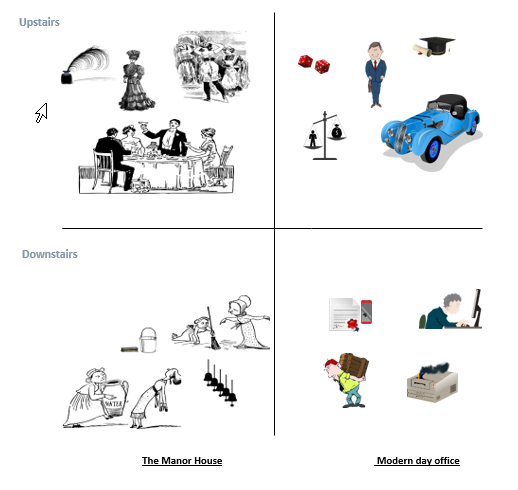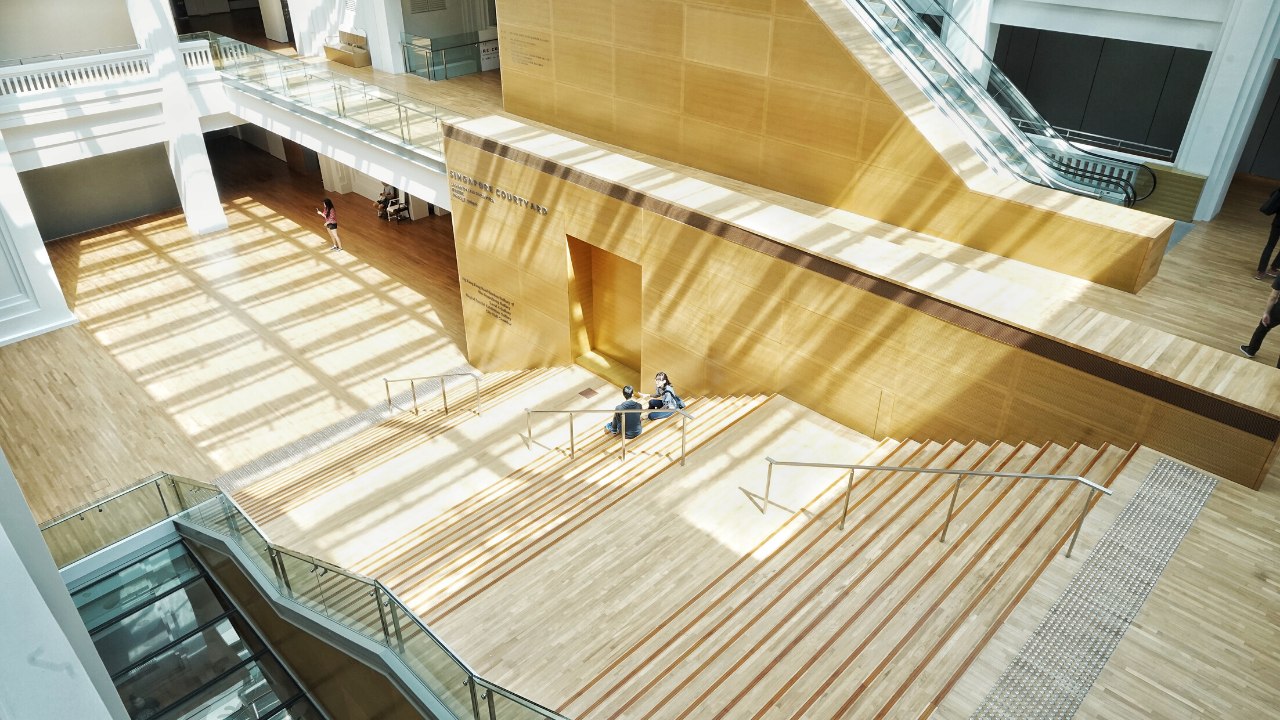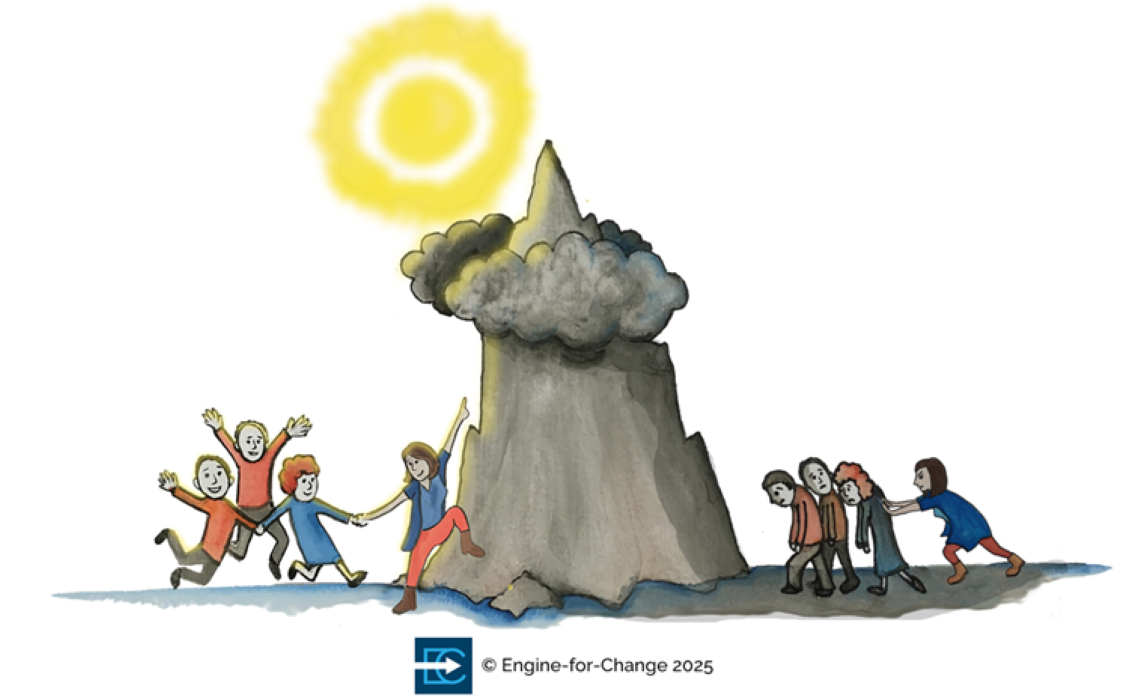Tensions in some form exist in every workplace and impact how individuals and groups are viewed and treated. These can lead to mindsets of ‘us vs them’ which creates distance and negatively charged interactions between groups. One of the contributing factors to the ‘us vs them’ mentality, could be the physical design of the organisation, which involves the number of floors the organisation occupies, the types of employees that sit on those floors, their role, salary, education and so on.
Is physical layout really that important?
Research was conducted in North America and the United Kingdom with individuals from the Oil and Gas, Manufacturing and Information Technology sector. Results revealed that engineers from the Information Technology sector, who worked on the first floor of their office building thought of themselves as ‘lesser than’ the engineers that worked on the second floor. These engineers had lower academic qualifications than those who sat on the floor above them, but they possessed specialist skills. They often felt nervous venturing ‘upstairs’ to collaborate on initiatives.
Furthermore, they frequently felt that they were being victimised by Management who worked on the floors above them. They also often complained about the lack of work tools to do their job.
Similarly, individuals who worked in a warehouse/plant and open-aired setting in the Oil and Gas, and Manufacturing sector, felt that Management was not interested in their views and they would sweat and toil while their bosses reaped all the perks. The divide was evident, as these individuals would assemble around their work areas to socialise, and often felt skeptical venturing into the office building for discussions about any matter.
There were obvious tensions and even biases in these scenarios, and this way of thinking could be linked to social structures in the Edwardian manor house in generations past, where servants /workers occupied the ground floor of the establishment or barns and the royals/owners who have money, power and accolades, occupy the upper floor. Access to the upper floor was often a nerve-racking experience, as some form of rebuke or chastisement was expected if proper manners and protocols were not adhered to. This is characteristic of the ‘us vs them’ or ‘upstairs vs downstairs’ mentality as depicted in the diagram below.

This mentality has often been the brunt of jokes on television and other media, but can it be, that it is important and still relevant in workplaces today, as it not only dictates our conscious and subconscious thoughts and how individuals react to one another but the success of organisational change.
Yes, it is!
Once individuals in the Information Technology sector were given a promotion and were allowed to sit with the team on a higher floor or allowed to work on corporate transformation initiatives with teams that sit on floors above them, their perspective and attitude changed in a positive way. Self-confidence and comfort levels with peers increased. These individuals were now willing to share their views, viewed their work as important and themselves as a crucial part of the organisation. Similar results were obtained when individuals who work in warehouses/plants and open-aired jobs were given permission to work on corporate initiatives with Management, where most meetings were held in the office building.
The physical shift to a higher floor or from an outdoor facility to an office setting made a significant positive change in moral, collaboration on initiatives and productivity.
Tackling the ‘upstairs/downstairs’ mentality
The ‘upstairs/downstairs’ mentality should be its own change project and dealt with as a matter of urgency. Below are a few tactics Management can employ:
- Mix it up – Management should sit on different floors in a multi-level office. Similarly, Supervisors and/or Managers should occupy both the warehouse/ plant and office, in organisations where warehouses/plants are on the same site. This setup brings some level of equality to all locations and helps to lessen the divide.
- Have meetings on different floors in the office building or find a neutral space like an outdoor canopy or sitting area if the weather is nice – Neutral spaces work particularly well and lessens the tension associated with going to the floor that Management occupies or having them invade the floor occupied by the masses. This also encourages more interaction and collaboration across teams.

- Implement agile working – This way of working can prove useful if spaces on different floors are carved out for meetings, training, etc. These workspaces should be equally attractive and have the same terms of use, so staff from across the organisation can feel comfortable using spaces on any floor. This enables greater interaction, collaboration and the perception of a fair and balanced workplace.
- Floor aesthetics should be equally appealing – Furthermore, a shift to making the ground floor the more appealing floor could produce favourable results. I have visited some organisations where the ground floor was the ‘hip’ social level. A coffee bar, piano and pool table surrounded meeting rooms and creative spaces, and staff from all floors and seniority levels were found frequenting this level during the day and evenings. After all, who doesn’t like to have a coffee and chat with colleagues?

- Ensure that equipment distribution is fair, and the technology is streamlined – The latest gadgets given to office workers who reside on higher floors will be envied by those who work on lower floors and in warehouses/plants. This will create chaos and strife, so ensure that all individuals are given relevant, up to date, functioning tools to carry out their role.
Tensions and biases in the organisation can be lived out by the ‘us vs them’ or ‘upstairs/downstairs’ mentality and can impair and stifle an organisation’s efficiency and productivity. Swift and deliberate measures should be taken by Management to address these tensions, and restore balance, so the workplace can thrive.
In part 2 we will look at some of the tactics Change Leaders could employ on change initiatives, in workplaces that previously struggled with this mentality.







